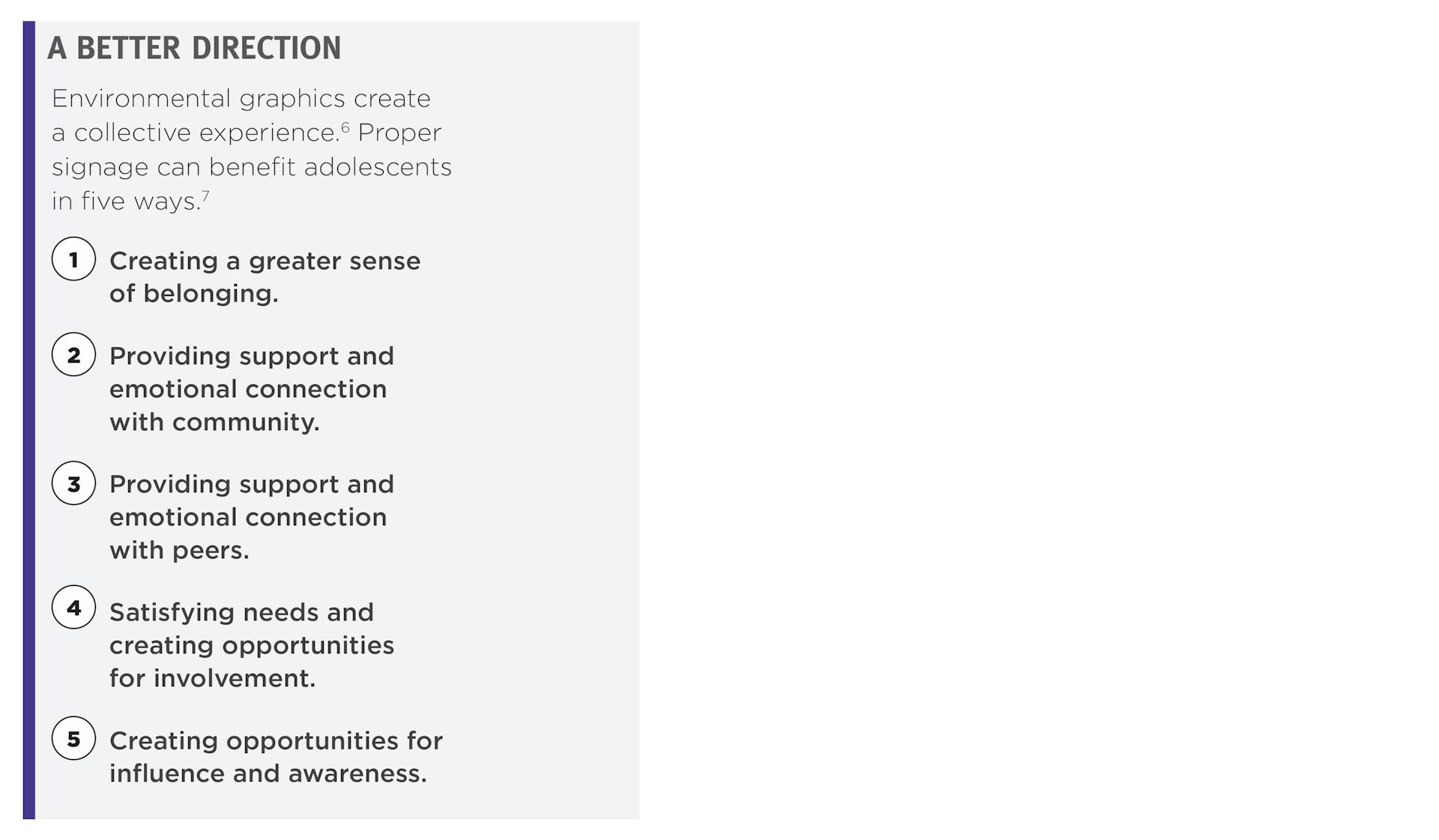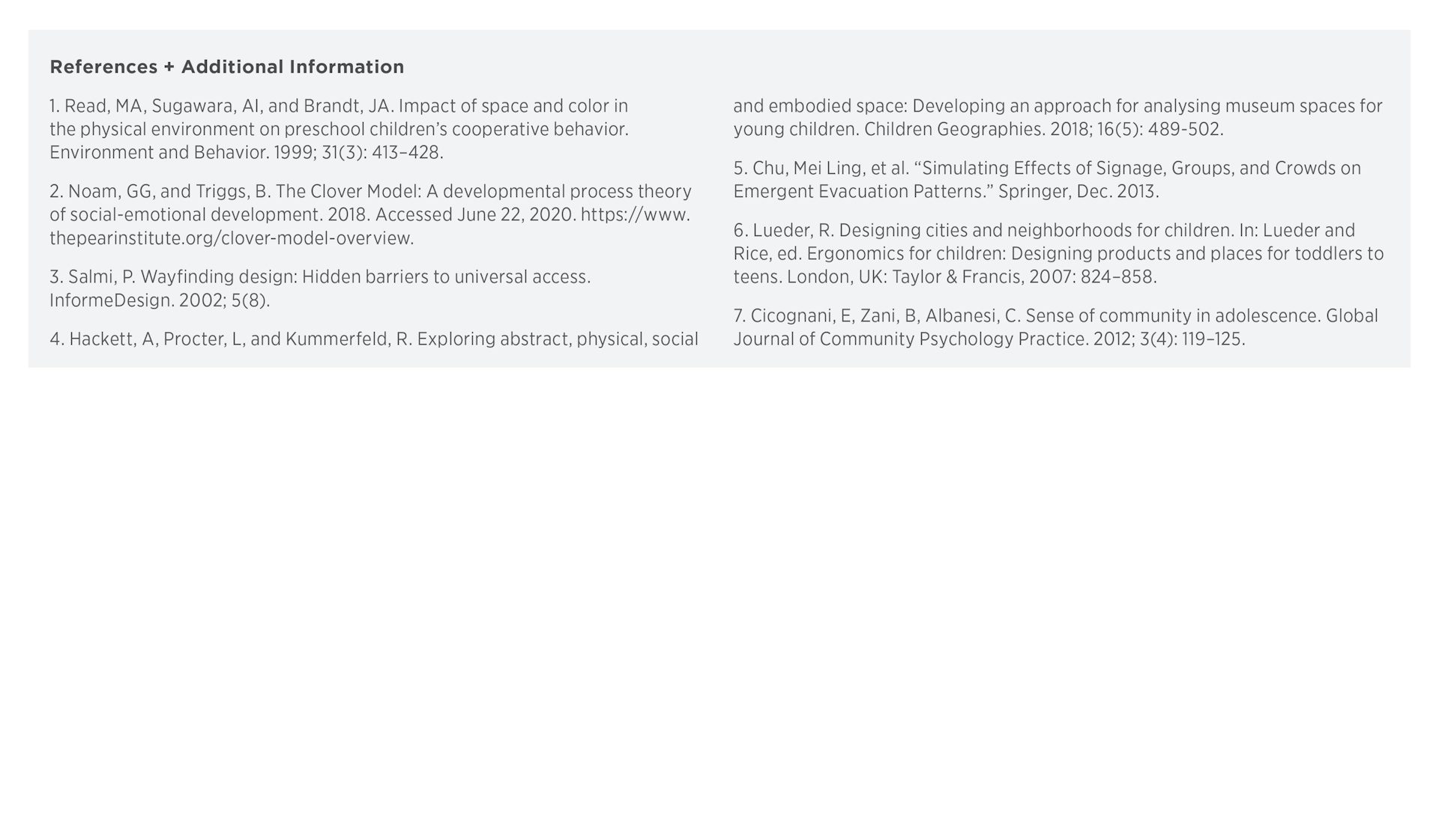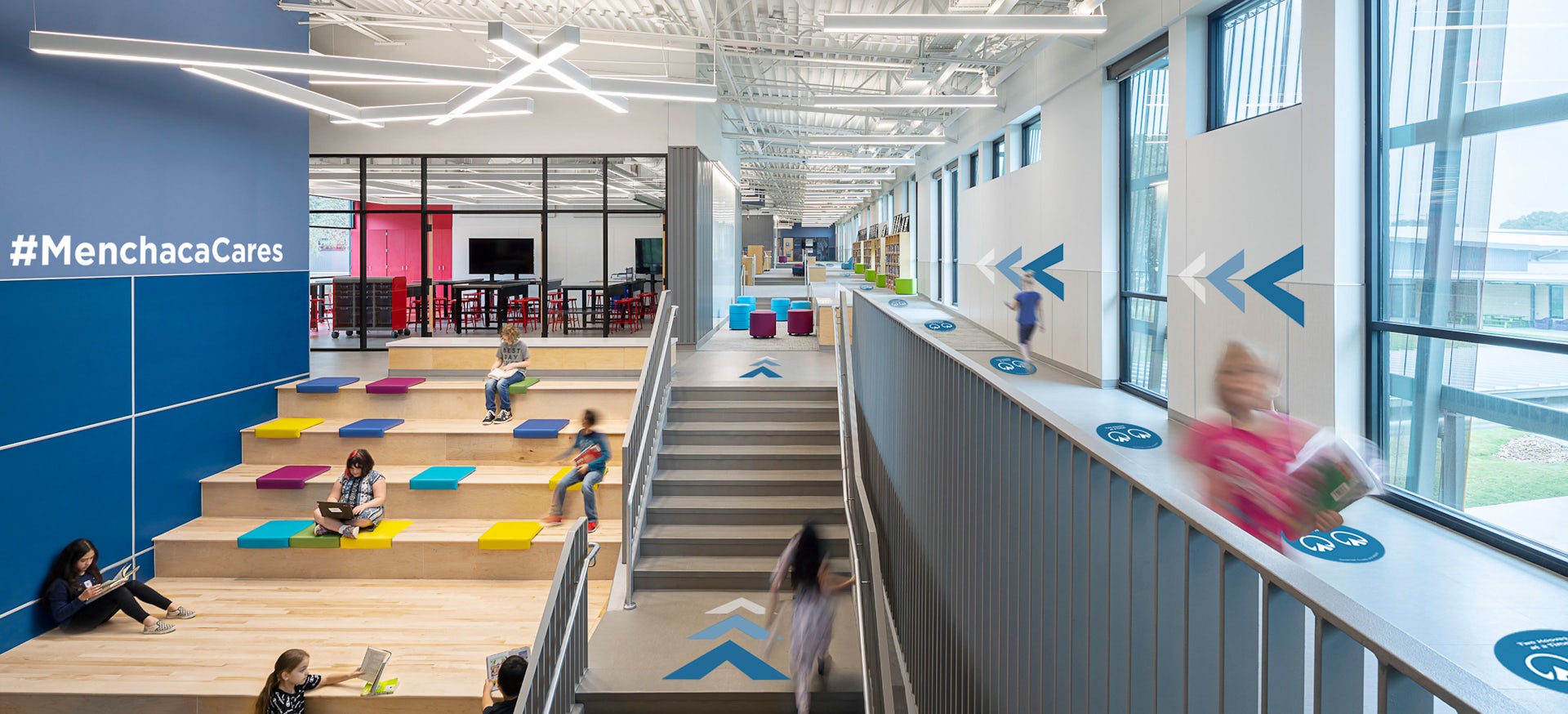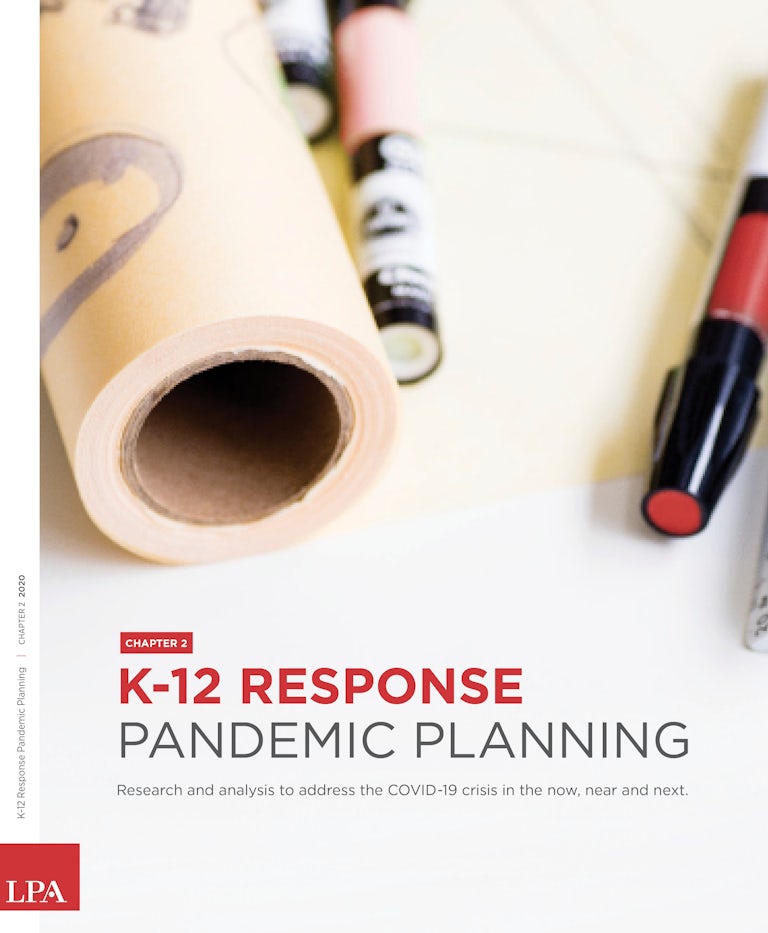In recent weeks, we’ve been conducting a case study of a K-12 campus, looking at the ways environmental graphics can help create informative and directional pathways for the students, providing reminders about healthy habits and behavior.
From research, we know that environmental graphics can play an important role in encouraging positive social behavior and a culture of care. And we also know that it requires different strategies for different age groups. American Psychologist James Gibson explains the development of visual perception such that, “as children grow older, their ability to perceive and learn from affordances within environments increases.”1
Finding a Better Direction
Research finds environmental graphics offers different ways to encourage healthy behavior and help students navigate through turbulent times.

For the elementary age group, it’s about self-regulating and using signage and graphics to help early learners understand boundaries in an encouraging way. At the middle school level, it is more about belonging. And at a late adolescent level, like high school, it’s more about instilling a greater sense of civic and social responsibility.2
As students return to school, signage can serve as an important identifier for new or repurposed landmarks, such as a community center converted to a wellness center or a conference room that is now a virtual teaching station. The goal is to give these landmarks an identity so that as educators refer to these spaces, there is a common understanding and excitement about the use and activity that will happen within these areas.3

With any environmental graphics, distinctive colors, quotes and icons to create a connection with the space.3 In general, the text should be no more than five words, in order to simply tell the story for these generations, studies suggest. Signs should be placed at appropriate heights and icons scaled for the targeted age group. Repetition is essential to reinforce the message4 but without creating visual clutter.
In the current situation, there’s clearly a need to over communicate. Learners and educators are already familiar with their campus and the return to school will require a shift in behavior.
When done right, there’s an added value to the signage. You can create healthy behavioral signage in a way that directly and positively impacts learners. Depending on the age group, graphics can add a sense of self purpose, belonging and social civic responsibility, producing real benefits to engagement and the behavioral development of learners.5

















